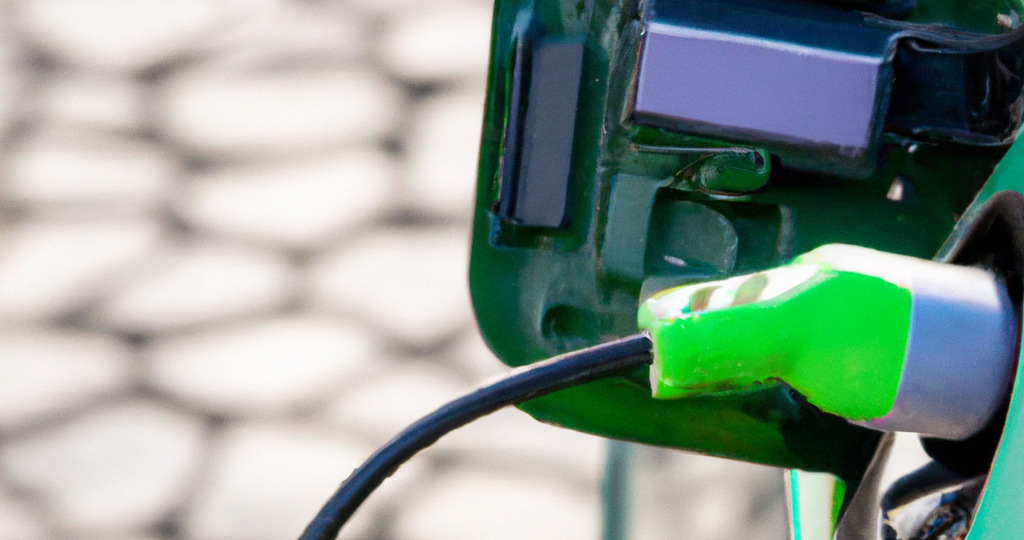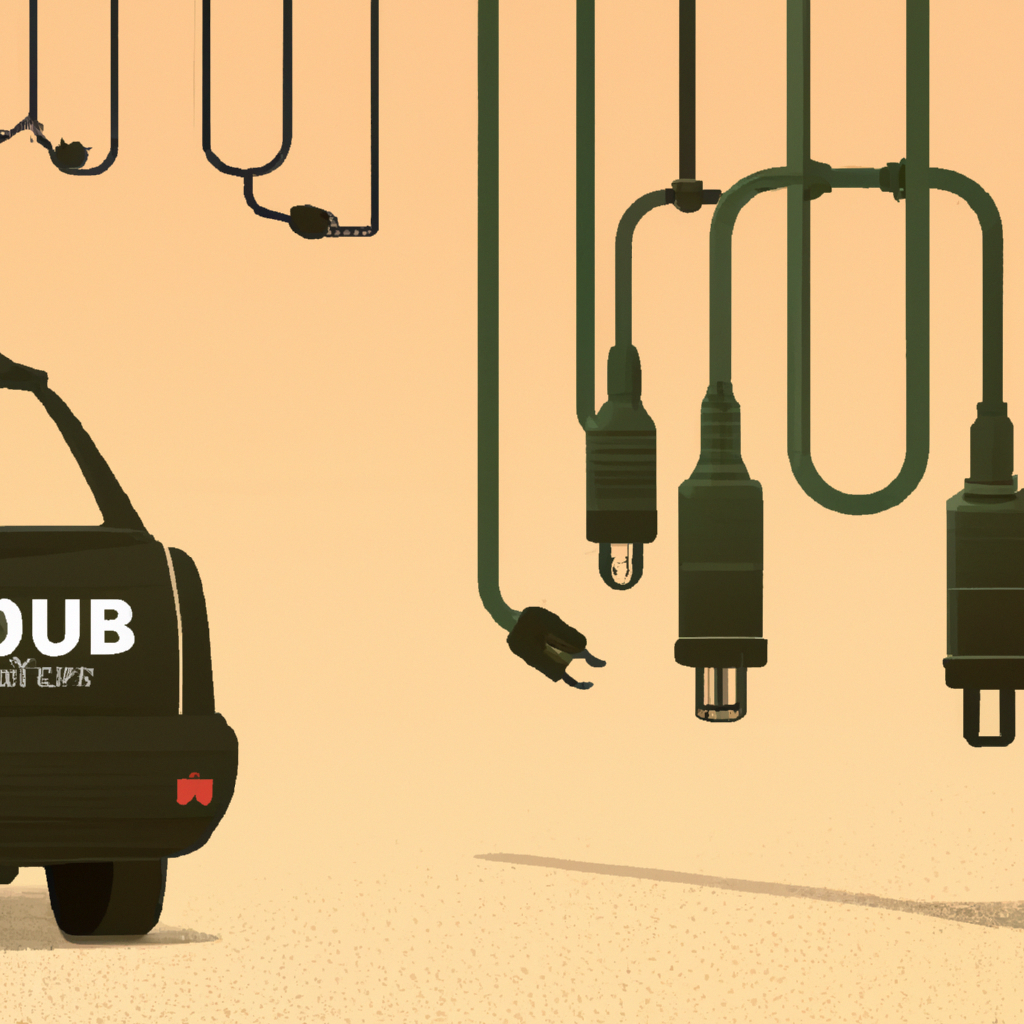EV Chargers And Emergency Preparedness: Backup Power Solutions
October 4, 2023 | by Jacob Kang

In today’s fast-paced world, it’s becoming increasingly important to have reliable backup power solutions, especially when it comes to electric vehicles (EVs). With the rise in popularity of EVs, it’s crucial to ensure that you have access to charged batteries even in emergency situations. In this article, we will explore the importance of EV chargers in emergency preparedness and discuss various backup power solutions to keep your EVs running smoothly during unforeseen circumstances. Whether it’s extreme weather events or power outages, being prepared with backup power solutions is essential for any EV owner. So, let’s dive into the world of EV chargers and emergency preparedness to discover the best ways to keep your EV charged and ready even when the unexpected happens.

This image is property of images.unsplash.com.
1. Importance of EV Chargers in Emergency Situations
In recent years, there has been a growing recognition of the importance of electric vehicle (EV) chargers in emergency situations. As our society becomes more reliant on renewable energy sources and aims to decrease our reliance on fossil fuels, EVs have emerged as a promising solution. However, during power outages and natural disasters, traditional charging infrastructure may become inaccessible, hindering the use of EVs as a reliable mode of transportation. This is where backup power solutions for EV chargers come into play, ensuring that EVs can still be charged and utilized during emergency situations.
1.1 Decreasing Reliance on Fossil Fuels
One of the key benefits of EVs is their ability to reduce our reliance on fossil fuels. By replacing traditional gasoline-powered vehicles with EVs, we can significantly reduce greenhouse gas emissions and combat climate change. However, for EVs to truly make a positive impact, it is crucial to have a robust charging infrastructure in place. During emergency situations, when fossil fuel supplies may be disrupted, EV chargers with backup power solutions become even more valuable. They allow EV owners to continue charging their vehicles and contribute to the overall reduction in carbon emissions, regardless of the surrounding circumstances.
1.2 Power Outages and Natural Disasters
Power outages and natural disasters can strike at any time, leaving communities without electricity for hours, days, or even weeks. In such situations, access to transportation is often limited, making it difficult for individuals to evacuate if necessary or access essential services. EV chargers with backup power solutions can play a crucial role in ensuring that EVs remain operational during these challenging times. With an alternative power source in place, EV owners can have peace of mind, knowing that they will still be able to use their vehicles if needed, whether it’s for evacuation purposes or simply to run errands and access vital supplies.
1.3 Emergency Response and EV Charging Networks
Another aspect of the importance of EV chargers in emergency situations is their role in supporting emergency response efforts. During emergencies, such as hurricanes or wildfires, first responders rely heavily on vehicles to reach affected areas and provide aid. By integrating EV chargers with backup power solutions into the emergency response infrastructure, it becomes possible to ensure that electric emergency vehicles remain fully charged and ready for deployment. This not only helps in maintaining effective emergency response operations but also showcases the resiliency and sustainability of EVs as a reliable transportation solution.
2. Types of Backup Power Solutions for EV Chargers
To understand the options available for backup power solutions for EV chargers, it is essential to explore the different types of systems that can be used. There are three main types: battery-based backup systems, generator-based backup systems, and solar power backup systems. Each offers its own advantages and considerations.
2.1 Battery-Based Backup Systems
Battery-based backup systems are one of the most popular solutions for providing backup power to EV chargers. These systems store energy in batteries and use it to power the chargers when the main grid is down. The advantage of battery backup systems is their ability to store energy from renewable sources, such as solar or wind, allowing for a truly sustainable backup power solution. Additionally, they provide a smooth and uninterrupted charging experience, as they eliminate the need to switch to a backup power source during outages.
2.2 Generator-Based Backup Systems
Generator-based backup systems utilize traditional fuel-powered generators to provide backup power to EV chargers. These generators can run on various fuels, such as gasoline, diesel, or natural gas, and are designed to automatically kick in when the main power supply fails. While generator-based backup systems can provide a reliable source of power, there are considerations to keep in mind, such as fuel availability and emissions. It is crucial to ensure that the generators are properly maintained and fueled to guarantee their effectiveness during emergencies.
2.3 Solar Power Backup Systems
Solar power backup systems harness the sun’s energy to charge EVs during emergencies. These systems consist of solar panels that convert sunlight into electricity, which is then used to charge EVs directly or stored in batteries for later use. Solar power backup systems offer the advantage of being environmentally friendly and sustainable, as they rely on renewable energy. However, their effectiveness may be limited in areas with limited sunlight or during prolonged cloudy periods. It is important to consider the local climate and weather conditions when contemplating the use of solar power backup systems for EV chargers.
3. Battery-Based Backup Systems
Battery-based backup systems have gained significant popularity due to their versatility and sustainability. These systems come with several benefits that make them an attractive choice for providing backup power to EV chargers.
3.1 Benefits of Battery Backup Systems
One of the primary benefits of battery backup systems is their ability to store energy from renewable sources. By utilizing solar or wind energy to charge the batteries, EV owners can ensure that their vehicles are powered by clean, sustainable energy, even during emergencies. This aligns with the overall goal of reducing carbon emissions and promoting a greener future.
Battery backup systems also offer a seamless transition between the main power supply and backup power. With a properly sized battery system, EV owners can continue charging their vehicles without interruptions or delays, regardless of whether the main grid is functioning. This reliability and convenience are essential during emergency situations when every minute counts.
3.2 Types of Battery Backup Systems
There are various types of battery backup systems available for EV chargers. The most common ones include lead-acid batteries, lithium-ion batteries, and flow batteries. Each type has its own advantages and considerations.
Lead-acid batteries are the traditional choice for backup power solutions and have been used for many years. They are relatively affordable and readily available. However, they tend to be bulkier and have a lower energy density compared to other battery types.
Lithium-ion batteries, on the other hand, have gained popularity in recent years due to their higher energy density and longer lifespan. They provide a more compact solution, making them suitable for environments with limited space. Although they are generally more expensive upfront, their longevity and efficiency make them a cost-effective choice in the long run.
Flow batteries are a relatively newer technology that offers advantages such as scalability and long cycle life. They can adapt to different energy storage needs, making them suitable for both residential and commercial applications. However, their complexity and limited availability may pose challenges in the deployment of flow battery backup systems for EV chargers.
3.3 How to Choose the Right Battery Backup System
Choosing the right battery backup system for an EV charger depends on various factors, including the specific power requirements, available space, budget, and desired level of sustainability. It is essential to assess the charging needs of the EVs, considering factors such as the battery capacity, charging speed, and frequency of use. Additionally, the physical space available for installing the battery system should be taken into account, as larger systems may require more room.
Budget considerations are also important, as battery backup systems can vary significantly in price depending on the battery type and capacity. It is essential to weigh the upfront costs against the long-term savings and benefits. Lastly, for those aiming for maximum sustainability, choosing a battery backup system that can be charged using renewable energy sources is crucial. This ensures that even during emergencies, the power used to charge the EVs comes from clean and renewable sources.
4. Generator-Based Backup Systems
While generator-based backup systems may rely on traditional fuel-powered generators, they still offer distinct advantages that make them an attractive choice for backup power solutions for EV chargers.
4.1 Advantages of Generator Backup Systems
One of the primary advantages of generator backup systems is their ability to provide a reliable and consistent source of power. Unlike renewable energy sources, such as solar or wind, generators can operate continuously and are not dependent on external factors like weather conditions. This makes them suitable for areas where access to alternative energy sources may be limited or where extended power outages are common.
Generator backup systems also offer flexibility in terms of fuel options. They can run on gasoline, diesel, natural gas, or propane, allowing for different choices depending on availability and local regulations. This versatility ensures that EV chargers can still be powered, regardless of the specific fuel infrastructure in the area.
4.2 Types of Generators for Backup Power
There are various types of generators that can be used for backup power solutions for EV chargers. The most common ones include portable generators, standby generators, and hybrid generators.
Portable generators are compact and versatile, making them suitable for temporary or mobile charging setups. They can be easily transported to different locations and provide a quick solution during emergencies. However, their limited capacity may not be ideal for long-term or high-demand charging needs.
Standby generators are designed to provide a more permanent and higher-capacity solution. They are typically installed outside of buildings and are connected directly to the electrical system. Standby generators can automatically detect power outages and start providing backup power within seconds. They offer a seamless transition and can support the charging needs of multiple EVs simultaneously.
Hybrid generators combine the advantages of portable and standby generators. They are designed to operate on multiple fuel types, providing flexibility in emergency situations. Hybrid generators can be used as both a temporary solution for mobile charging or a more permanent installation for higher-capacity charging needs. However, their versatility may come at a higher cost compared to other generator types.
4.3 Considerations for Choosing a Generator Backup System
When selecting a generator backup system for EV chargers, several factors need to be considered. First, it is essential to determine the power requirements of the EV chargers and ensure that the generator’s capacity matches or exceeds those needs. This includes considering factors such as the battery capacity, charging speed, and the number of EVs to be charged simultaneously.
Fuel availability and convenience are also crucial considerations. Evaluating the fuel options and their availability in the area is important to ensure that the generator can be fueled during emergencies. Additionally, the ease of fuel storage and refueling should be taken into account to guarantee the uninterrupted operation of the backup power system.
Noise levels produced by generators can be a significant consideration, particularly in residential areas or during nighttime charging. Opting for quieter models or installing sound-dampening enclosures can help minimize disruptions caused by generator noise.
Maintenance and servicing requirements should also be considered. Generators, like any other mechanical system, require regular maintenance to ensure their optimal performance. It is important to consider the ease of access for maintenance and the availability of qualified technicians in the area.

This image is property of images.unsplash.com.
5. Solar Power Backup Systems
Solar power backup systems offer a sustainable and environmentally friendly solution for providing backup power to EV chargers. By harnessing the sun’s energy, these systems can ensure that EVs can be charged during emergencies, without relying on fossil fuel-powered generators or traditional grid electricity.
5.1 Harnessing the Sun’s Energy
Solar power backup systems work by capturing sunlight and converting it into electricity. They consist of solar panels, which are typically installed on rooftops or open spaces, and an inverter, which converts the direct current (DC) generated by the panels into alternating current (AC) that can be used by EV chargers.
The panels are made up of photovoltaic (PV) cells, which contain semiconductor materials that can absorb photons from sunlight and convert them into electrons. These electrons then flow through the PV cells, creating an electric current. By connecting multiple panels together, a solar power backup system can generate enough electricity to charge EVs even during emergencies.
5.2 Components of a Solar Power Backup System
In addition to solar panels and inverters, solar power backup systems for EV chargers may also include other components to ensure their effectiveness and reliability. These components include:
-
Batteries: Solar power backup systems can include batteries to store excess energy generated during the day for later use. The charged batteries can then be used to power EV chargers during emergencies when sunlight may be limited.
-
Charge controllers: Charge controllers regulate the flow of electricity from the solar panels to the batteries, ensuring that the batteries are charged efficiently and preventing overcharging or damage to the system.
-
Monitoring systems: Monitoring systems provide real-time data on the performance and efficiency of the solar power backup system. They can track energy production, battery levels, and overall system health, allowing for proactive maintenance and optimization.
-
Transfer switches: Transfer switches are used to seamlessly switch between grid power and solar power during emergencies. They detect power outages and automatically redirect the electricity flow to the backup power source, ensuring uninterrupted charging for EVs.
5.3 Installation and Maintenance
Installing a solar power backup system requires careful consideration of factors such as available space, solar exposure, and regional regulations. Ideally, solar panels should be installed in areas with maximum sunlight exposure, such as rooftops or open spaces free of shading. Proper positioning and mounting of the panels are essential to optimize solar energy capture.
Maintenance requirements for solar power backup systems are generally low, but periodic inspections and cleaning are necessary to ensure optimal performance. The panels may accumulate dirt or debris over time, reducing their efficiency. Regular cleaning and visual inspections can help identify any damaged or faulty components that may affect the system’s function during emergencies.
Solar power backup systems also require occasional battery maintenance, such as checking the battery levels, ensuring proper connections, and replacing batteries if needed. It is important to follow manufacturer guidelines and consult professionals for any specialized maintenance tasks to ensure the longevity and efficiency of the system.
6. Integration of EV Chargers and Backup Power Systems
To fully maximize the benefits of EV chargers as backup power solutions, it is crucial to focus on the integration of these systems with existing infrastructure and explore innovative technologies that enhance their capabilities.
6.1 Smart Charging Infrastructure
Smart charging infrastructure plays a significant role in the integration of EV chargers and backup power systems. By utilizing advanced communication and control technologies, smart charging systems can prioritize and manage the charging of EVs based on available power supply, grid demand, and user preferences.
In the context of backup power, smart charging infrastructure can dynamically manage the charging of EVs during emergencies, ensuring that critical loads are prioritized and that power supply is distributed efficiently. This intelligent coordination between EV chargers and backup power systems optimizes energy usage and mitigates the strain on limited resources during emergency situations.
6.2 Vehicle-to-Grid (V2G) Technology
Vehicle-to-Grid (V2G) technology enables bi-directional power flow between EVs and the electrical grid. In the context of backup power solutions, V2G allows EVs to not only draw power from the grid or backup systems but also provide power back to the grid or other critical loads when needed.
By enabling EVs to function as mobile power storage systems, V2G technology enhances the resilience and flexibility of backup power solutions. During emergencies, EVs can serve as energy reservoirs, delivering power to critical facilities or supporting the overall grid stability. This distributed approach to backup power reduces the strain on centralized systems and increases the reliability of emergency response efforts.
6.3 Ensuring Reliable Power Supply
To ensure a reliable power supply for EV chargers during emergencies, it is crucial to consider redundancy and diversification in backup power sources. Relying on a single backup power system may introduce vulnerabilities in the event of equipment failure or fuel shortages. By integrating multiple backup power sources, such as battery-based systems, generator-based systems, and solar power systems, EV chargers can be powered by the most efficient and available source during emergencies.
Redundancy also extends to the electrical infrastructure supporting the backup power systems. Utilizing multiple power sources, distribution paths, and storage options increases the resilience of the overall system and minimizes the risk of complete power loss. It is important to design and implement backup power solutions with redundancy in mind to ensure reliable charging capabilities for EVs during emergencies.

This image is property of images.unsplash.com.
7. Government Initiatives and Incentives
Recognizing the importance of EV chargers as backup power solutions, governments at various levels have implemented initiatives and incentives to promote their adoption and maximize their potential during emergency situations.
7.1 Promoting EV Adoption and Backup Power Solutions
Government initiatives often focus on promoting the adoption of EVs as a whole, which indirectly contributes to the need for backup power solutions. By offering incentives, such as tax credits or grants, governments encourage individuals and organizations to switch to EVs and recognize the role they can play in reducing carbon emissions and increasing energy resilience.
7.2 Financial Incentives for EV Charger Installations
To incentivize the installation of EV chargers with backup power solutions, governments may offer financial incentives or subsidies. These incentives can help offset the installation and equipment costs, making it more affordable for individuals and businesses to invest in backup power-enabled EV chargers. In addition, some governments may provide grants or low-interest loans specifically for the installation of EV charging infrastructure with backup power capabilities.
7.3 Tax Credits for Backup Power Systems
Governments may also offer tax credits or deductions for the installation or purchase of backup power systems for EV chargers. These incentives help lower the financial burden for individuals and organizations looking to implement reliable backup power solutions. By offering tax incentives, governments aim to accelerate the adoption of backup power-enabled EV chargers and contribute to overall energy resilience.
8. Case Studies: Successful Implementation of Backup Power Solutions
Several case studies showcase the successful implementation of backup power solutions for EV chargers in emergency situations. These examples highlight the various approaches and benefits associated with integrating EV chargers and backup power systems.
8.1 Citywide Emergency Preparedness Programs
Cities like San Francisco and New York City have implemented citywide emergency preparedness programs that include the installation of backup power-enabled EV chargers. By strategically locating these chargers in areas prone to power outages or natural disasters, communities can rely on EVs as a reliable means of transportation during emergencies. These programs not only promote sustainability but also demonstrate the value of collaborative efforts between local governments and private entities in ensuring the resilience of critical infrastructure.
8.2 EV Charging Stations as Emergency Shelters
In some cases, EV charging stations with backup power systems have been used as emergency shelters during disasters. By combining the charging capabilities with backup power, these stations can provide a safe refuge for individuals who may need to evacuate their homes. The availability of EV chargers ensures that those utilizing the emergency shelters can keep their vehicles charged and ready for use, if necessary, once the situation improves.
8.3 Resilient Communities and Sustainable Infrastructure
Numerous communities around the world have demonstrated the benefits of incorporating backup power solutions for EV chargers into their overall sustainable infrastructure plans. By investing in renewable energy sources, such as solar or wind, and integrating them with battery backup systems, these communities can ensure reliable power supply for their EV chargers, even during challenging situations. This not only promotes a more sustainable energy landscape but also fosters community resilience and preparedness.

9. Challenges and Future Outlook
While backup power solutions for EV chargers offer significant benefits, there are some challenges to consider. Overcoming these challenges is essential to fully realize the potential of EV chargers as backup power systems and enhance their effectiveness in emergency situations.
9.1 Overcoming Infrastructure Limitations
One of the key challenges is the need for robust infrastructure to support widespread backup power-enabled EV charging. The installation of backup power systems, whether battery-based, generator-based, or solar-based, requires upfront investment and careful planning. It is necessary to ensure that the electrical infrastructure can handle the additional load during emergencies and that the backup power sources are properly integrated into the existing grid.
9.2 Standardization and Interoperability
Standardization and interoperability across different backup power systems, EV chargers, and electrical grids are crucial for seamless integration and optimal performance. Ensuring compatibility and ease of use between different components and manufacturers simplifies the deployment and maintenance of backup power-enabled EV chargers. Developing industry-wide standards and protocols for communication and control is essential for promoting interoperability and facilitating a more cohesive backup power ecosystem.
9.3 Potential of Microgrids for EV Charging
Microgrids, which are localized energy systems that can operate independently from the main grid, offer significant potential for enhancing the resilience of backup power solutions for EV chargers. By establishing microgrids that utilize a combination of renewable energy sources and battery storage, communities can ensure reliable power supply for EV charging during emergencies. The establishment of microgrids may require investment in infrastructure and regulatory frameworks, but their long-term benefits can contribute to a more sustainable and resilient energy landscape.
10. Conclusion
As we continue to embrace EV chargers as backup power solutions, we create a more resilient and sustainable energy landscape. Decreasing our reliance on fossil fuels and harnessing renewable energy sources are critical steps in combating climate change and promoting a greener future.
The integration of backup power solutions, such as battery-based systems, generator-based systems, and solar power systems, ensures that EV owners can continue using their vehicles during emergencies. Through smart charging infrastructure, V2G technology, and the adoption of various backup power sources, we can maximize the resiliency of EV charging infrastructure and enhance the overall energy landscape.
Government initiatives and incentives play a crucial role in promoting the adoption and implementation of backup power-enabled EV chargers. By offering financial support and tax incentives, governments can accelerate the transition towards sustainable and resilient transportation solutions.
Successful case studies demonstrate the effectiveness of backup power solutions for EV chargers in emergency situations. From citywide emergency preparedness programs to EV charging stations serving as emergency shelters, these examples highlight the value of integrating EV chargers and backup power systems into community infrastructure.
Challenges, such as infrastructure limitations and standardization issues, must be addressed to fully realize the potential of EV chargers as backup power solutions. By overcoming these challenges and embracing innovative technologies, we can create a future where EVs and backup power systems work seamlessly together, fostering collaboration and driving innovation in sustainable transportation.

RELATED POSTS
View all


